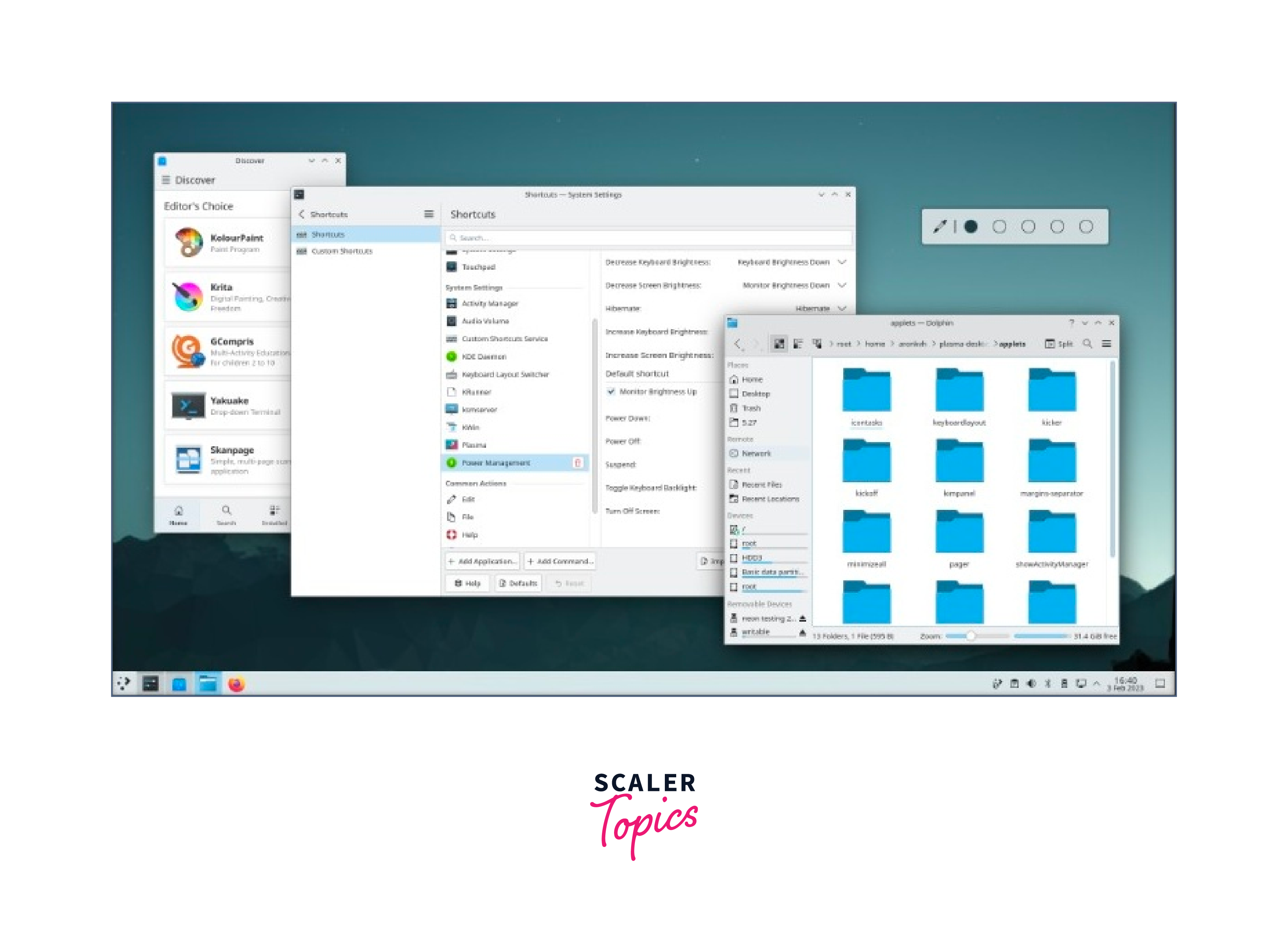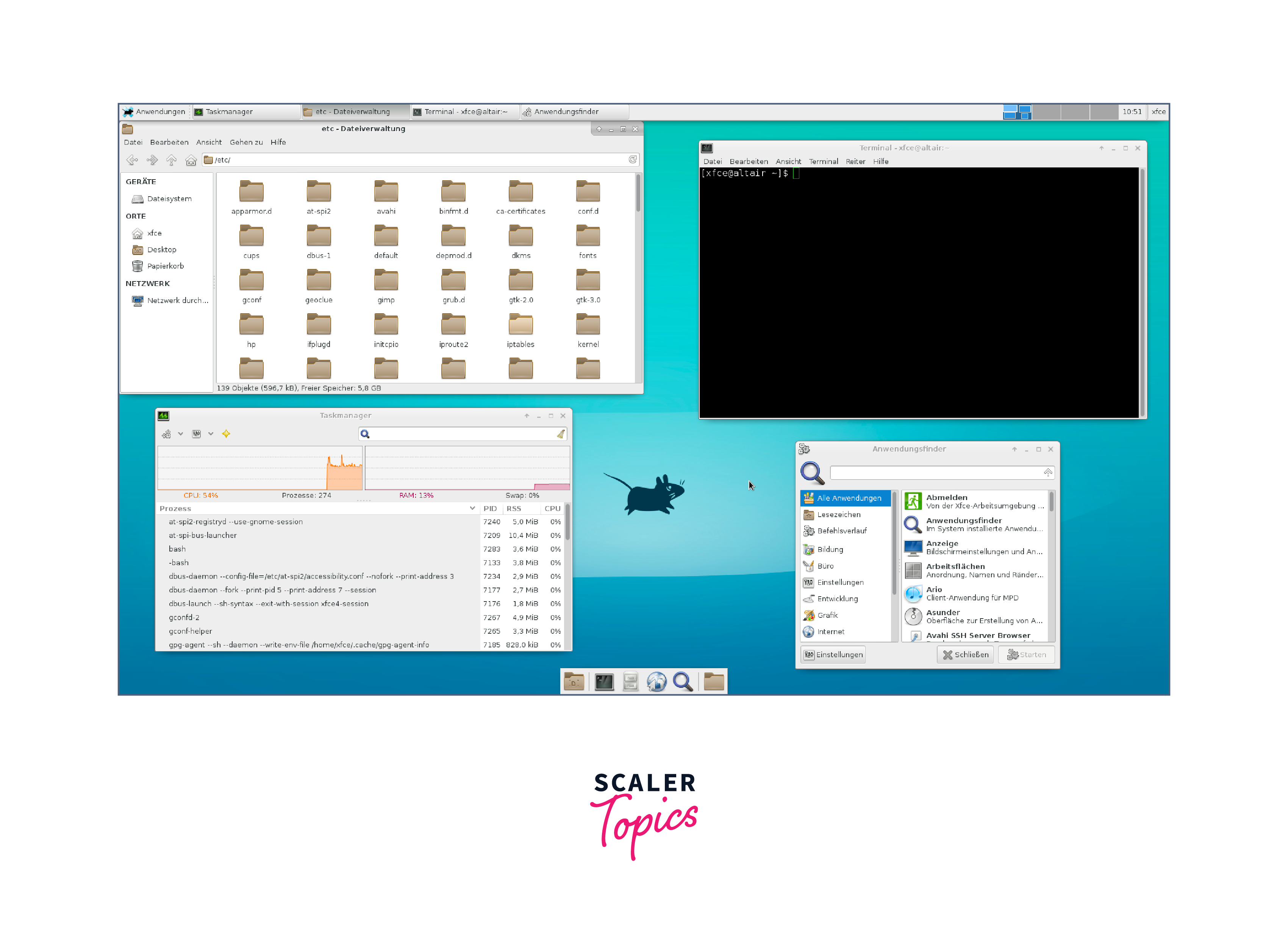Desktop Environment for Linux Cheat Sheet
Introduction
When it comes to using Linux, one of the key decisions users have to make is choosing the right desktop environment. A desktop environment for Linux provides a graphical user interface (GUI) for Linux, allowing users to interact with their system in an intuitive and visually appealing manner. With numerous options available, it can be overwhelming to select the ideal desktop environment for your needs. In this cheat sheet, we will explore some of the best Linux desktop environments, highlighting their pros and cons to help you make an informed decision.
Desktop Environment for Linux
1. GNOME

GNOME is a popular desktop environment for Linux known for its sleek and modern design. It offers a user-friendly interface with a focus on simplicity and ease of use. The overall design of GNOME is clean and minimalistic, providing a clutter-free workspace for users. The default layout consists of a top panel that houses the system menu, application launcher, and system notifications. It also includes an activities overview, accessed by clicking the "Activities" button in the top-left corner, which provides a convenient way to switch between applications and workspaces.
One of the notable features of GNOME is its customizable dock, called the Dash, which allows users to pin frequently used applications for quick access. The Dash can be positioned at the left or right side of the screen, providing flexibility in terms of workflow and personal preference. GNOME also excels in touch-screen support, offering a touch-friendly interface and gesture-based interactions.
Pros:
- Modern and polished user interface.
- Extensive customization options, including themes and extensions.
- Excellent integration with various applications and services.
- Intuitive and user-friendly design.
- Supports a wide range of hardware.
- Regular updates and active development community.
- High accessibility features and support.
Cons:
- Can be resource-intensive, requiring higher system specifications.
- Some users find the default workflow and design choices different from traditional desktop environments.
- Limited customization compared to other desktop environments like KDE.
- Certain features and settings might be buried in the settings menu, making them harder to find for new users.
- The removal of certain features in recent versions has been met with mixed reactions from users.
2. KDE Plasma

KDE Plasma is a highly customizable and feature-rich desktop environment for Linux that offers a visually appealing and modern user interface. It provides a versatile workspace with a wide range of customization options, making it popular among users who value flexibility and personalization. It offers various desktop layouts, including traditional, panel-based layouts and more modern, dynamic layouts. Users can easily configure and customize the appearance, layout, and behavior of panels, widgets, and desktop effects to create their ideal working environment.
While offering extensive customization options, KDE Plasma does require relatively higher system resources compared to some other desktop environments. Its advanced visual effects and animations may demand more processing power and memory, making it less suitable for older or less powerful hardware. However, KDE developers continuously optimize performance and efficiency in each release to mitigate these resource requirements.
Pros:
- Highly customizable and feature-rich desktop environment.
- Offers a traditional and familiar desktop layout, making it easier for users transitioning from other operating systems.
- Provides a wide range of customization options for themes, widgets, and desktop effects.
- Excellent integration with KDE applications, providing a cohesive and seamless experience.
- Offers a robust set of system settings and configuration options.
- Supports a wide range of hardware, including older machines.
- Active development community and regular updates.
Cons:
- Can be resource-intensive, especially when using advanced visual effects and animations.
- Initial configuration may feel overwhelming for new users due to the vast customization options.
- Some users find the default settings and design choices less aesthetically pleasing.
- Integration with non-KDE applications may not be as seamless as with KDE applications.
- The sheer number of configuration options can lead to confusion for some users.
- Less emphasis on touch-friendly interfaces compared to other desktop environments.
3. Xfce

Xfce is a lightweight and efficient desktop environment for Linux known for its simplicity, stability, and resource-friendly nature. It aims to provide a traditional desktop experience while keeping resource usage low, making it an excellent choice for older or less powerful hardware.
One of the key strengths of Xfce is its lightweight nature. It consumes minimal system resources, resulting in fast and responsive performance even on older machines. Xfce achieves this efficiency by employing a modular approach, where each component is designed to be lightweight and perform specific tasks without unnecessary overhead.
Pros:
- Lightweight and efficient, making it ideal for older or less powerful hardware.
- Fast and responsive performance, with low resource consumption.
- Provides a clean and straightforward user interface, resembling traditional desktop layouts.
- Offers a good balance between customization options and simplicity.
- Highly modular, allowing users to select and customize components according to their preferences.
- Stable and reliable, with a focus on functionality and performance.
- Supports a wide range of Linux distributions.
Cons:
- Compared to other desktop environments, the default aesthetics may appear less visually appealing or modern.
- The number of pre-installed applications may be limited, requiring users to install additional software for specific needs.
- Customization options, while present, may not be as extensive or advanced as in some other desktop environments.
- Some advanced features found in other desktop environments may be missing in Xfce.
- Limited touch-screen support, as Xfce is primarily designed for traditional desktop usage.
- The development cycle may not be as frequent or rapid as in some other desktop environments.
4. Cinnamon

Cinnamon is a desktop environment for Linux that aims to provide a traditional and user-friendly experience. It offers a familiar interface reminiscent of classic desktop layouts, making it an attractive choice for users who prefer a more traditional desktop environment.
One of the key strengths of Cinnamon is its focus on simplicity and ease of use. It provides a straightforward and intuitive user interface that resembles the classic desktop layout with a panel at the bottom of the screen. The panel includes a menu, taskbar, system tray, and other essential applets for quick access to various features and applications.
Pros:
- Provides a familiar and intuitive user interface, resembling traditional desktop layouts.
- Highly customizable, allowing users to personalize their desktop experience easily.
- Offers a good balance between simplicity and advanced features.
- Excellent integration with Linux Mint, the flagship distribution for Cinnamon.
- Stable and reliable performance.
- Supports a wide range of hardware configurations.
- Active development community and regular updates.
Cons:
- Can be resource-intensive compared to some lightweight desktop environments.
- Customization options, while extensive, may require some initial setup and configuration.
- Integration with non-Linux Mint distributions may not be as seamless.
- Limited touch-screen support, as Cinnamon is primarily designed for traditional desktop usage.
- The development pace may not be as rapid as in some other desktop environments.
- Some users may find the default aesthetics less visually appealing compared to other options.
5. MATE

MATE is a desktop environment for Linux that aims to provide a traditional and lightweight user interface, reminiscent of the popular GNOME 2 desktop environment. It focuses on simplicity, stability, and ease of use, making it a popular choice for users who prefer a classic desktop experience.
One of the key strengths of MATE is its lightweight nature. It is designed to be resource-friendly, ensuring smooth performance even on older or less powerful hardware. MATE achieves this efficiency by utilizing a traditional desktop layout and minimizing visual effects and system requirements.
Pros:
- Lightweight and efficient, making it suitable for older or less powerful hardware.
- Provides a traditional and familiar desktop experience, resembling GNOME 2.
- Highly customizable, allowing users to personalize their desktop layout and appearance.
- Offers a stable and reliable performance.
- Easy to use and navigate, with a straightforward user interface.
- Good compatibility with a wide range of Linux distributions.
- Active development community and regular updates.
Cons:
- The default aesthetics may appear less visually appealing or modern compared to some other desktop environments.
- The number of pre-installed applications may be limited, requiring users to install additional software for specific needs.
- Some advanced features found in other desktop environments may be missing in MATE.
- Limited touch-screen support, as MATE is primarily designed for traditional desktop usage.
- While customizable, the level of customization options may not be as extensive as in some other desktop environments.
- The development pace may not be as rapid as in some other desktop environments.
Conclusion
-
Choosing the right desktop environment for Linux is crucial to enhance your overall user experience.
-
Each environment has its strengths and weaknesses, catering to different user preferences and hardware capabilities.
-
Whether you prioritize modern design, customization options, or lightweight performance, there is a desktop environment for everyone.
-
Consider your needs, hardware specifications, and desired features to make an informed decision before selecting a desktop environment for Linux.
